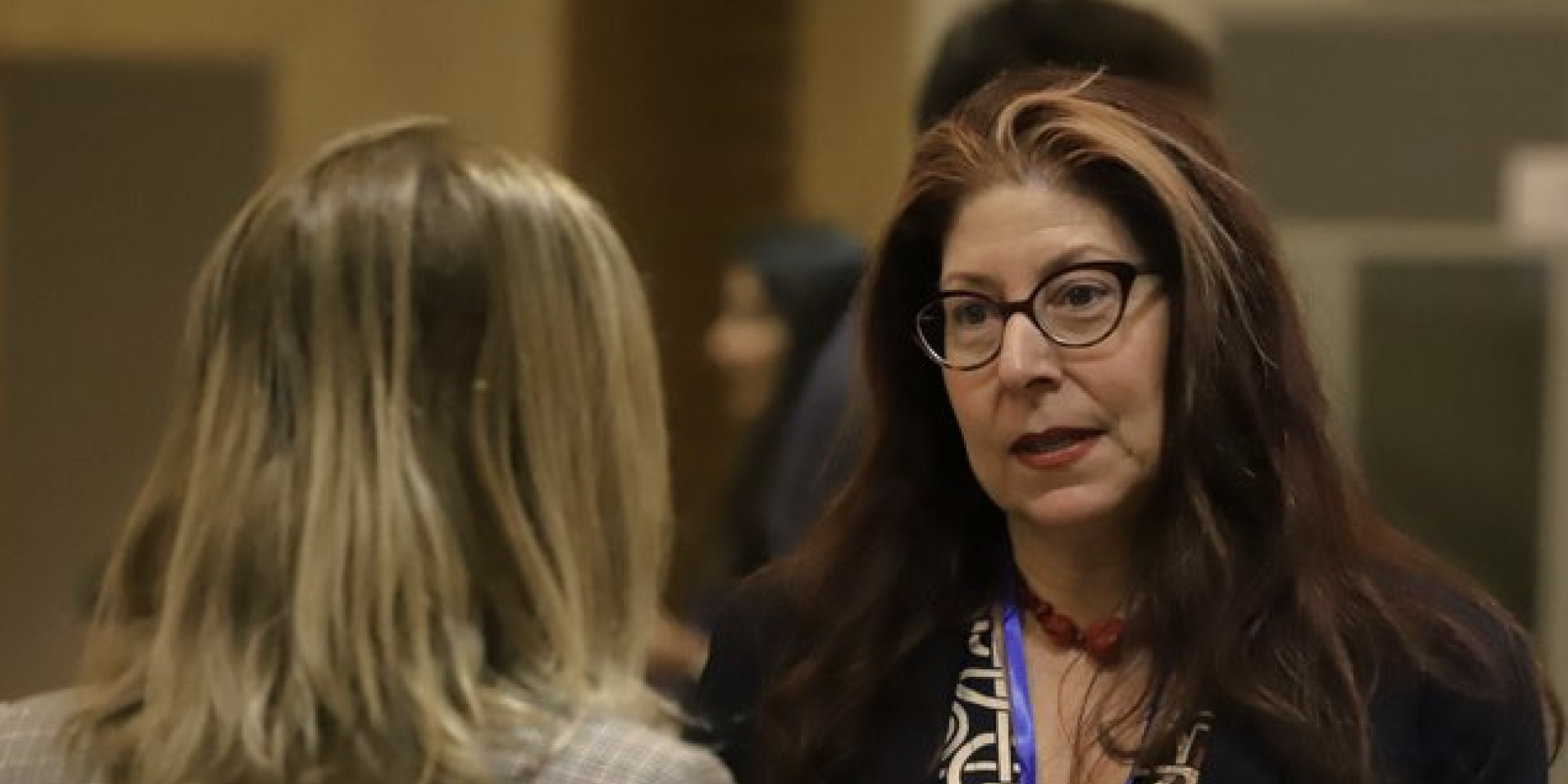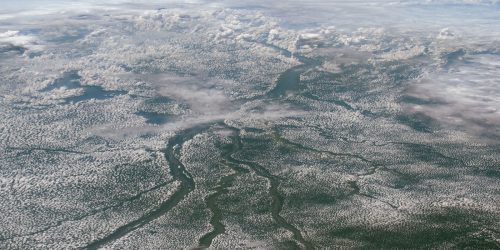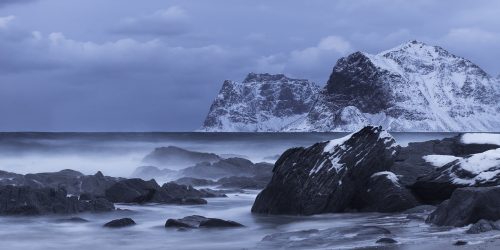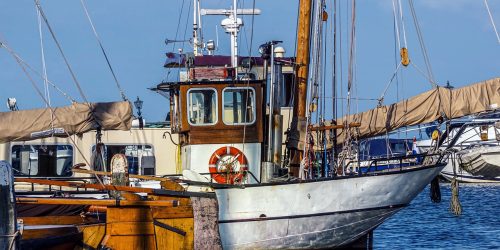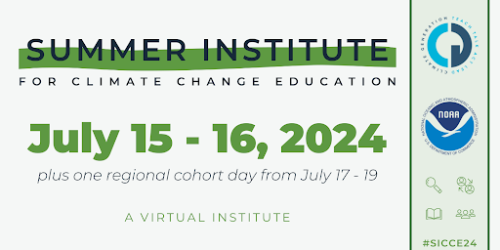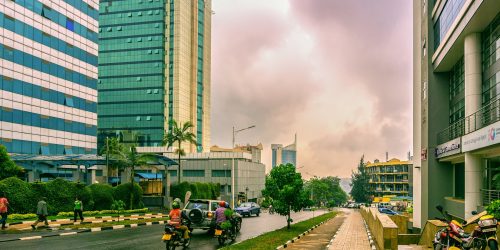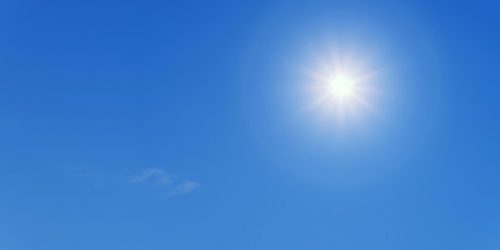
This article continues a series of interviews with NOAA Climate Program Office (CPO) employees and CPO-funded scientists in celebration of Women’s History Month.
As one of the founding members for NOAA’s Climate and Health Program, Juli Trtanj has been committed to shaping the field of climate resilience. She’s been instrumental in advancing the climate and health field through partnerships with dozens of federal agencies, growing it into coordinated domestic and international efforts, and expanding the breadth of topics being addressed in climate and health resilience strategies. Today, Juli is continuing to pursue this work as the NOAA Climate and Health Program Director, One Health Program Lead, and National Integrated Heat Health Information System (NIHHIS) Executive Director.
“Early in my career, I saw that climate change was driving environmental and health problems more rapidly than the world was prepared to deal with them.” Trtanj said. “The world needs innovative solutions to protect the planet as well as the health of the people, animals, and plants who inhabit it.”
In this interview, Juli discusses her work in this field, how she has seen NOAA conceive of and develop its Climate and Health Program, and how she views the role of women in climate resilience. Our full conversation follows.
Could you tell me about your background and what first drew you into the field of climate and health?
I always knew I was going to do something to help protect the planet and animals. I actually had a background in environmental science and environmental policy as a student at the University of California-Santa Barbara, and I was interested in working in public international law to help the world better manage our shared natural resources.
After an 8-year detour working on Wall Street in international finance and venture capital, I decided to get back to my passion of helping protect the planet. I earned my graduate degree at the Yale School of Forestry and Environmental Studies (now called the Yale School of the Environment). At that time, there wasn’t really a cohesive field of climate and health, but it was starting to move in that direction.
You helped to launch Climate and Health at NOAA. How did that start?
After I finished graduate school, I received a NOAA Sea Grant Knauss Fellowship with the Senate Commerce Committee in 1996. When I started that position, the El Niño forecasts weren’t yet publicly available, and not many people knew what they were. A group of us were working to make the El Niño forecasts more societally relevant, including in relation to health.
My boss was the head of the U.S. Global Change Research Program, and he noticed that many people weren’t seeing the value of climate and health information yet. There was a lot of talk about how environmental factors were driving health issues, but there wasn’t much research specifically on climate and health.
Leading researchers and health professionals started to come to NOAA and say, “Somebody needs to do climate and health work. It is falling between the cracks of agency missions and mandates. This is a complete gap in our global change research, and nobody is addressing it.” So my boss, J. Michael Hall, tasked me with helping to fill this gap. And that’s how I got started. My boss gave me the freedom to explore climate and health, and he supported me as I explored different paths and learned more about what was needed to foster this emerging field.
What did the Climate and Health Program first look like when it started?
NOAA ran the first interagency and private sector research program on climate and health, called the Joint Announcement on Climate Variability and Human Health with the National Aeronautics and Space Administration (NASA), the Environmental Protection Agency (EPA), the National Science Foundation (NSF), and the Electric Power Research Institute. We were funding research to better understand the environmental drivers of climate impacts on health to ultimately predict and prevent them. Our early work involved helping to improve predictions of Hanta Virus and Rift Valley Fever, understand how sea surface temperature affects cholera and other water-related illnesses, and learn about environmental drivers of vector-borne diseases such as Lyme disease, malaria and West Nile Virus.
That’s the basic premise for the program: How do we use environmental information and forecasting to give us more advanced warnings for climate-sensitive diseases and other health risks? Whether it’s weeks, months, or years, that advance warning can allow us to better plan and prepare. At that time, this was a very novel approach, and several NOAA scientists, including me, were part of a Nobel Prize-winning team for their innovative work, including on climate and health.
How have you helped to shape the Climate and Health Program over the years?
We initially focused on the more complicated ecologically-mediated diseases, and we didn’t work on heat or air quality early on because they seemed to be more direct and better understood. But over time, we’ve seen that the impact of heat and air quality are rapidly growing as public health problems. These issues will be difficult to address if governance and solutions are fragmented. So in 2015, we added a focus on extreme heat with the launch of the National Integrated Heat Health Information System (NIHHIS). NOAA and the Centers for Disease Control and Prevention (CDC) teamed up to figure out how to better manage heat across geographic scales and time scales. We launched NIHHIS with 8 or 9 other agencies at the time, under the auspices of the National Security Council Critical Infrastructure Working Group, but we’ve since expanded to have more than 25 agencies involved. And we also supported the development of the Global Health Health Information Network (GHHIN) to facilitate dialogue across countries, so we can learn from each other.
Additionally, we’ve developed a very robust focus in One Health within CPO and across NOAA. This evolved from the Oceans and Human Health Initiative I launched and ran from 2003 to 2013, which focused on early warning systems for ocean-related health risks such as harmful algal blooms, vibrios, and marine zoonotics; benefits from the sea; and graduate training. The legacy of that still exists, although we’ve since expanded the One Health Program to cover several more thematic areas. It’s really a cross-NOAA effort.
Is there a moment from your career that you feel especially proud of?
Two, actually. The NOAA One Health Summit this past summer was one moment that I’m very proud of. During the Summit, NOAA leadership and representatives from all of NOAA’s line offices showed up to demonstrate their support for NOAA’s One Health Initiative and showcase how much of a priority one health work is. It was a big deal for me to see NOAA and other agency leaders, scientists, researchers, and more gathered together in a room to discuss what they’re doing in this space and better unite our efforts.
Internationally, the Climate and Health Program has evolved to have considerable influence. I was asked to lead the World Meterological Organization (WMO) – World Health Organization (WHO) Joint Subcommittee on Climate Services for Health to develop an implementation plan for climate services for health. Because NOAA’s leadership in this space is so unique, we were asked to help other countries develop similar climate and health programs and improve our global capacity to address climate and health risks. To have that kind of honor, to help shape how the world coordinates across WMO, WHO, and all of our member countries — I was really, really proud of our work and genuinely humbled by that role.
How do you see the role of women in climate and health resilience?
I’ve definitely seen an evolution in the role of women in climate and health. There were a lot of women involved in the Climate and Health Program when we first started, and it really helped to have them at the forefront of these efforts to get the program off the ground. Getting a whole new program off the ground across agencies and with the private sector took a great deal of vision, tenacity and patience! It was a very collegial community of program managers, academics and non-governmental organizations just trying to help fill a critical gap, and in very little time. And many of the program managers, academics, private sector and congressional leaders were women. That said, the field also has a lot of very forward-leaning visionary men too, and I’ve been fortunate to have many of those in my leadership chain and as mentors. It definitely takes a village to make programs like this happen.
Have you had any women mentors or role models inspire you?
Absolutely. Having good role models and mentors has paved the way for me to thrive. I’ve been really fortunate to work with very supportive men and women throughout most of my tenure at NOAA. But when we launched NOAA’s Oceans and Human Health Initiative, the entire panel, from congressional staff, to NOAA staff, to academics—all were women! Two that jump to mind are Dr. Rita Colwell and Margaret Davidson. They’ve both helped to shape my career and further build this field.
Dr. Colwell is a scientist at the University of Maryland and one of the first people to use satellite imagery to predict environmental drivers of cholera. She subsequently became the director of the National Science Foundation — the first female director of the National Science Foundation! She was our Oceans and Human Health Distinguished scholar at NOAA, and she really helped put NOAA on the map for using environmental information for the cholera and vibrio work that we do. To this day, she’s still very supportive of our work in Oceans and Human Health, and the Climate and Health Program.
Margaret Davidson helped make the case that NOAA could and should build an Oceans and Health Program and eventually a One Health Program. She saw to it that I, even as a more junior person at the time, was able to help lead it. She provided me with a lot of insight into how to manage a program that was congressionally directed and navigate NOAA! Her wisdom and insight helped me so much, and I’ve been fortunate to have her, and other women, as role models.
What do you hope to accomplish in the future, both professionally and personally?
I really hope to see climate and health, heat and health, and One Health really growing as fields. All topics at the interface of environment and health are skyrocketing in importance right now. We need a safe environment to live in, partially for our own benefit, but also for the intrinsic value of the flora and fauna that live here.
I hope all of this work will help both people and institutions — because it will definitely take both — change their behavior and implement innovative solutions for how we care for our planet. Women are often the hardest hit by changes in their environment, so the more we can empower them to be involved in resilience solutions, the better off we’ll all be. It will take strong leadership from women to collaboratively work on this global issue together.


